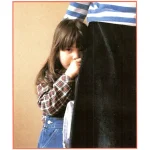
A brimful of stories…….fables, narratives, tales, legends, folklore and raconteurs delivering their missives to a spell-bound audience. Story telling is about sharing … it brings together the teller and the listener in a bond that bridges incompatability in society. It closes the hiatus between the young and the elderly, the able bodied and those with special needs, teacher and pupil. Sharing stories with your child also gives him or her an opportunity of having your undivided attention, not only providing him or her with an enjoyable experience but one which will make him or her feel loved and secure.
“Tell me a story
Tell me a story
Tell me a story
Remember what you said
You promised me you said you would
You gotta give in so I’ll be good
Tell me a story then I’ll go to bed …”
(From a song written by Terry Gilkyson and performed by Jimmy Boyd and Frankie Laine in 1953)
By telling your child stories, you will foster a close relationship with him or her at a time when he or she is learning to be independent in many fields. It will also give you an insight into his or her world and provide you an opportunity to keep in touch with his or her views and thoughts. Today’s children are growing up in a high-tech world where personal contact is not needed for communication. Computer games and surfing the web can provide enjoyment and information but they are isolating and lonely exercises. Television and cinema compete with an arsenal of visual effects which leave little or nothing to the imagination.
Julia was inspired by the region’s fascinating past, ancient culture and tradition which led to her first story published in 2003, ‘The Pearl Diver’. It is read and enjoyed in primary schools and is one of her best-selling books throughout the Gulf. Julia has today written many more titles including ‘The Leopard Boy’, which was awarded the Kirkus Star, awarded to books of exceptional merit. The renowned storyteller, Michael Marpurgo, described The Leopard Boy as “A beautiful story and a wise and wonderful tale”. Julia has recorded over 100 audio books.
Traditional storytelling does not require or depend on visual aids. The story teller engages the listener with eye contact, facial expressions and innovations. The listener creates his own mental images as a result of sharing those ‘word pictures’. In turn the listener can also become the teller – how many young children love to listen to the same story being told and re-told which they store, contemplate on and reconstruct. Shaping, planning and predicting are crucial elements to listening to and telling stories. The best way of remembering a story is to tell it again.
Every human being is a story teller, it comes naturally to us – when we tell jokes or exchange anecdotes, when we reminisce about our childhood, when we explain a value or belief relating to an experience that formed it, we are, in fact, telling a story. It is important to encourage children to become owners of their own experiences, to become articulate and to share their thoughts and feelings in the telling, to make the story their own.
Children will tell stories when they are given time and responsibility and when they feel what they say is valued and as they feel comfortable and confident that someone is listening to them. Oral tradition is the place where stories thrive, flying back and forth between tellers and listeners and changing, in fact, growing all the time.
The future isn’t here yet and you cannot foretell what it will bring. The present is just a moment and the past is just one long story. People who neither tell stories nor listen to them live only for the moment and that is not enough. Perhaps for most children around the world the most enchanting words they long to hear are “ONCE UPON A TIME …”
(This blog has been inspired by my granddaughters, Sitara and Amaara, who love to read.)





Hearing the words ” Once upon a time” instantly makes me drop everything and starts to bring out the eager child in me.